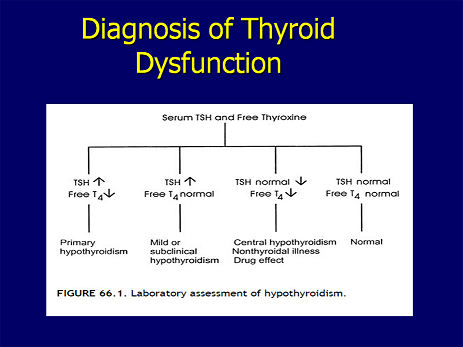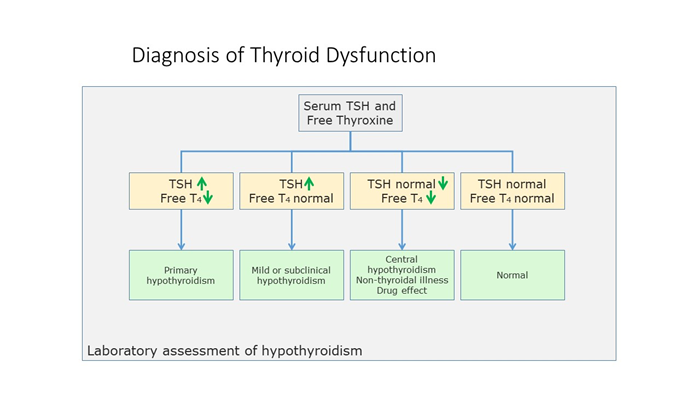Essentials About Thyroid Hormones and Reverse T3

Low T3: Thyroid Hormones and Reverse T3
What is the Thyroid?
The thyroid is a small, butterfly-shaped endocrine gland in the lower front of the neck, just below the Adam's apple. Despite its size, the thyroid has a big job to regulate many bodily functions, including metabolism, growth, and development. This gland produces two main hormones, triiodothyronine (T3) and thyroxine (T4), which are necessary for overall health and well-being. By releasing these hormones into the bloodstream, the thyroid helps your body use energy so every cell can function properly.
Thyroid Functions
The thyroid is a butterfly-shaped endocrine gland about 2 inches long and is located in the front of your neck below your Adam's apple. The thyroid has a big job in growth and metabolism by releasing the hormones thyroxine, or T4, and triiodothyronine, or T3, which regulate your body's ability to convert calories and oxygen into energy. The hypothalamus in your brain produces thyrotropin-releasing hormone, or TRH, which stimulates the release of thyroid-stimulating hormone, or TSH, from your pituitary gland. TSH then travels to your thyroid and tells it to release T4 and T3 into your bloodstream. Under normal conditions, your thyroid produces about 80% T4 and 20% T3 with T3 being 4 times more potent than T4. Keeping T3 and T4 in the normal range is essential for thyroid function and overall health.
Every cell in your body has receptors for thyroid hormones that affect your cardiovascular system, bone metabolism, protein synthesis, body temperature regulation, cholesterol production, glucose metabolism, cognitive function, and your gastrointestinal tract. 20 million Americans have some form of thyroid disorder, and women are more affected than men.
Thyroid Hormones
Thyroid hormones, T3 and T4 are produced by the thyroid gland and are necessary for many bodily functions. T3 is the more active form of thyroid hormone and T4 is converted to T3 in the liver and other tissues. T3 tests are necessary for diagnosing thyroid conditions and understanding T3 levels. These hormones regulate metabolism, heart rate, body temperature and muscle strength. Thyroid hormones are also critical for growth and development especially in children and adolescents for proper physical and cognitive development.
What are normal T3 levels?
Normal T3 levels are measured in nanograms per deciliter (ng/dL) of blood. The normal range for T3 levels varies among labs but generally is 80-180 ng/dL for adults. For children it's 100-200 ng/dL. Check your lab report for the reference range, as values can vary slightly among labs.
Low T3 Levels:
Low T3 levels can mean an underactive thyroid, or hypothyroidism. This is when the thyroid gland doesn't produce enough thyroid hormones, including T3. Low T3 levels can also be caused by starvation, certain medications, and severe illness. Symptoms of low T3 levels are fatigue, weight gain, dry skin, hair loss, and cold intolerance. In some cases low T3 levels can be a sign of a more serious condition like thyroid cancer or liver disease.

High T3 Levels:
High T3 levels can mean an overactive thyroid, or hyperthyroidism. This is when the thyroid gland produces too much thyroid hormone, including T3. High T3 levels can also be caused by thyroid nodules, thyroiditis, and certain medications. Symptoms of high T3 levels are weight loss, increased appetite, rapid or irregular heartbeat, fatigue, heat intolerance, and mood changes. In severe cases, high T3 levels can cause a life-threatening condition called thyroid storm.
What is Hypothyroidism and Symptoms and T3 Levels?
Hypothyroidism is the most common thyroid disorder, characterized by fatigue, weight gain, constipation, hair loss, dry skin, cold intolerance, irregular menstruation, depression, muscle pain, and cognitive impairment. Hypothyroidism is an underactive thyroid gland that doesn't produce enough hormones for optimal metabolic function. The most common cause of hypothyroidism is Hashimoto's thyroiditis, which is an autoimmune disorder where the body produces antibodies that attack and destroy thyroid gland tissue.
Other causes of hypothyroidism are iodine deficiency, pituitary tumor, radiation therapy on your face, neck, or chest; pregnancy and childbirth; aging; and underconversion of T4 to T3 due to inflammation, stress, selenium deficiency, and overexposure to fluoride, chlorine, or mercury. Liver disease can also affect thyroid function and T3 levels. If you're experiencing any of the symptoms of hypothyroidism, you should ask your doctor to order blood tests that include TSH, free T4, free T3, reverse T3, and thyroid antibodies if he or she suspects Hashimoto's. Important: Some thyroid tests may exhibit interference when sample is collected from a person consuming high-dose biotin supplements. Patients should stop biotin consumption at least 72 hours prior to sample collection. When interpreted correctly, lab results can help determine the underlying cause of your thyroid dysfunction and the right clinical interventions.
What is Reverse T3 and T3 Test?
Reverse T3 is often excluded by doctors when ordering lab tests for hypothyroidism because they think reverse T3 is an inactive metabolite with no physiological effect on the body. Not addressing reverse T3 has left many patients suffering from hypothyroidism despite their other lab tests coming back within normal range. A T3 test is important in diagnosing thyroid conditions and understanding T3 levels, as it helps to interpret thyroid health comprehensively. But reverse T3 does play a role in metabolic function when your body is under extreme stress by acting as an emergency brake to conserve energy. Under normal conditions, T4 is converted into the more active T3 that binds to cellular receptors all over your body to exert powerful metabolic effects.
Reverse T3 is also produced to clear out excess T4 from your body when not needed. But when reverse T3 levels rise too high, it blocks the uptake of active T3 by binding to cell receptors, and the end result is a slowing down of metabolism. According to the National Academy of Hypothyroidism, in a normal thyroid, about 40% of T4 is converted to T3, and 20% is converted to reverse T3 daily. But if your thyroid is malfunctioning or your body needs to conserve energy and is under significant stress, the conversion ratio can change to 50% of T4 becoming reverse T3. A big change like that can impact thyroid function and hormone availability.
If you have normal TSH, T4, and T3 but high reverse T3, you will still experience many symptoms of slow metabolism like weight gain, fatigue, depression, constipation, and chronic pain. To determine how T3 and reverse T3 are functioning at a cellular level, you need to calculate your free T3 to reverse T3 ratio by dividing the two numbers from your lab results.
For example, if your free T3 is 325 and your reverse T3 is 26, then you just divide 325 by 26, which is 12.5. A healthy T3 to reverse T3 ratio should be above 20. So 12.5 would mean subclinical hypothyroidism. If a doctor prescribes synthetic thyroid medication like levothyroxine to a patient with subclinical hypothyroidism, it can worsen their condition because the T4 in the medication will continue to cause an increase in reverse T3.

Thyroid Function Tests
Thyroid function tests are important tools in diagnosing and monitoring thyroid disorders like hypothyroidism (underactive thyroid) and hyperthyroidism (overactive thyroid). These tests measure the levels of thyroid hormones in the blood to assess thyroid gland function. The most common thyroid function tests are:
-
Thyroid-stimulating hormone (TSH) test: This test measures the level of TSH, which stimulates the thyroid gland to produce thyroid hormones.
-
Free T3 (FT3) test: This test measures the level of free T3 in the blood.
-
Free T4 (FT4) test: This test measures the level of free T4 in the blood.
-
Thyroid antibody tests: These tests measure the level of antibodies against thyroid cell proteins, which can indicate autoimmune thyroid disorders. Note: Some thyroid antibody tests may exhibit interference when sample is collected from a person consuming high-dose biotin supplements. Patients should stop biotin consumption at least 72 hours prior to sample collection.
Thyroid function testing includes other assessments like radioactive iodine uptake tests to diagnose hyperthyroidism or hypothyroidism.
By looking at the results of these tests, healthcare providers can diagnose thyroid conditions and create a treatment plan to get thyroid function back to normal.

Non-Blood Tests for Thyroid Function
Besides blood tests, there are several non-blood tests that can be used to evaluate thyroid function. These tests are:
-
Radioactive iodine uptake (RAIU) tests: These tests measure the amount of iodine taken up by the thyroid gland. High uptake means hyperthyroidism, and low uptake means hypothyroidism.
-
Thyroid scans: These tests use a small amount of radioactive iodine to create an image of the thyroid gland. This can help identify any abnormalities in the gland, like nodules or cancer.
-
Ultrasound: This test uses high-frequency sound waves to create an image of the thyroid gland. This can help identify any abnormalities in the gland, like nodules or cancer.
Thyroid Antibody Tests
Thyroid antibody tests are used to diagnose autoimmune thyroid diseases like Hashimoto's thyroiditis and Graves' disease. These tests measure the level of antibodies against thyroid cell proteins in the blood. The most common thyroid antibody tests are:
-
Thyroid peroxidase (TPO) antibodies: These antibodies are present in most people with Hashimoto's thyroiditis. Note: This test may exhibit interference when sample is collected from a person consuming high-dose biotin supplements. Patients should stop biotin consumption at least 72 hours prior to sample collection.
-
Thyroglobulin (Tg) antibodies: These antibodies are present in some people with Hashimoto's thyroiditis and Graves' disease.
-
Thyroid-stimulating immunoglobulin (TSI) antibodies: These antibodies are present in people with Graves' disease.
-
Thyrotropin receptor antibody (TRAb) tests: These tests detect both stimulating and blocking antibodies in Graves' disease.
Remember, thyroid antibody tests are not used to diagnose all thyroid conditions, and a diagnosis of a thyroid condition can only be made by a healthcare provider based on clinical evaluation, laboratory tests, and medical history.
How to decrease reverse T3?
There are two steps to decrease high Reverse T3:
-
Remove all the factors that are converting T4 into reverse T3.
-
Flush out the remaining Reverse T3 from your body.
Factors that can convert T4 into reverse T3 include chronic illnesses like diabetes, fibromyalgia, arthritis, and Lyme disease; low-calorie diet or eating disorders like anorexia; chronic inflammation like autoimmune diseases; insulin resistance or leptin resistance; extreme exercise like marathons, triathlons, or heavy weightlifting; mental/emotional stress like loss of job, divorce, death of a loved one, or PTSD; gastrointestinal infections or imbalances like intestinal dysbiosis, irritable bowel syndrome, yeast overgrowth, or candida; and certain drugs like beta blockers, antidepressants, and diabetic and antiseizure medications. Radioactive iodine uptake tests can help assess thyroid function and diagnose hyperthyroidism.
There are also several nutritional supplements that can support your thyroid gland and convert T4 into T3. One is iodine. Your body needs iodine to make thyroid hormones. In 2007, the World Health Organization estimated that 30% of the world's population is iodine deficient, and infants born to mothers with hypothyroidism are at risk of learning and developmental delays. The recommended intake of iodine is 1-2 milligrams a day.
The second is selenium. The thyroid gland has the highest concentration of selenium by weight of any organ in the body. Selenium is needed to form the enzymes that convert T4 into active T3. As an antioxidant, selenium also protects thyroid tissue from oxidative stress. The recommended intake of selenium is 200-400 micrograms a day.
The third is zinc. Optimal zinc helps convert T4 into active T3 and lowers reverse T3. One study showed that when patients with normal T4, low T3 and high reverse T3 were given zinc supplements for 12 months, their T3 levels normalized and reverse T3 went back to normal. The recommended intake of zinc is 30-60 milligrams a day.
Once you have addressed your T4 conversion issue, under the guidance of your healthcare provider, you can flush out the excess reverse T3 from your body with bioidentical T3 hormones like Cytomel or compounded and sustained-release T3. T3 cannot be converted into reverse T3 so as you slowly increase your T3 with medication, your T4 and reverse T3 will both go down.
T3 medication dose is 5-25 micrograms daily on an empty stomach first thing in the morning. Be patient; it can take 8-12 weeks to feel better as the reverse T3 is flushed out of your system. Side effects can be anxiety, heart palpitations, nausea, and headaches. Work with your doctor to find the right T3 dose for you.
Thyroid Health Tips
Thyroid health is key to overall health. Here's how to keep your thyroid gland working optimally:
-
Eat well: Include foods high in iodine, like seafood, dairy, and iodized salt, to support hormone production.
-
Exercise: Regular physical activity helps thyroid function and overall health.
-
Manage stress: Stress can harm thyroid function, so manage stress through meditation and yoga.
-
Sleep well: Sleep is key to thyroid function and overall health.
-
Avoid toxins: Some toxins, like pesticides and heavy metals, can affect thyroid function, so minimize exposure.
Thyroid health can be affected by many factors, including genetics, age, and certain medical conditions. If you have thyroid concerns, see your healthcare provider, who can do thyroid function tests and give you personalized advice to keep your thyroid healthy.
Bibliography
- Thyroid Hormones Overview - NCBI Bookshelf
- What Is Reverse T3? - HealthCentral
- Research on Reverse T3 - PubMed
- Overview of the Thyroid Gland - Merck Manuals
- Understanding Reverse T3 Syndrome - Neuroendocrinology Society
- Reverse T3 and Its Role in Thyroid Health - Niki Cleuet Blog
- Thyroid Hormone Production and Function - ColumbiaDoctors
- Overview of Reverse T3 - Verywell Health
- Reverse T3 in Clinical Practice - Cleveland Clinic Journal of Medicine
- Thyroid Hormone: Production, Function, and Regulation - Cleveland Clinic
- Understanding Reverse T3 and Thyroid Dysfunction - Elixir Naturopathy
- Reverse T3: Key Insights - Paloma Health
- The Role of Thyroid Hormones: An Intricate Dance - Revolution Health









